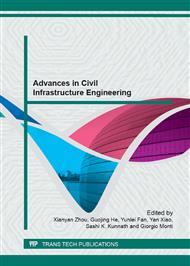p.796
p.803
p.807
p.812
p.818
p.825
p.832
p.836
p.841
Application of Differential Transform Method to Buckling Problems at Clamped-Free Boundary Conditions
Abstract:
Differential Transform Method (DTM) is a new semi-analytical, semi-numerical algorithm, which transforms differential equations to the form of Taylor series. The method derives an approximate numerical solution based on Taylor series expansion, which is a analytical solution built on polynomial form. Traditional Taylor series method is used for symbolic computation, while the Differential Transform Method obtained the solution of the polynomials through itineration calculations. Applying DTM to buckling problems, the critical length of a bar at clamped-free boundary is studied. The computational results are compared with analytical solutions and shown excellent agreement between those two algorithms. The method adds a new tool for computational engineering mechanics.
Info:
Periodical:
Pages:
818-822
Citation:
Online since:
January 2013
Authors:
Keywords:
Price:
Сopyright:
© 2013 Trans Tech Publications Ltd. All Rights Reserved
Share:
Citation:


